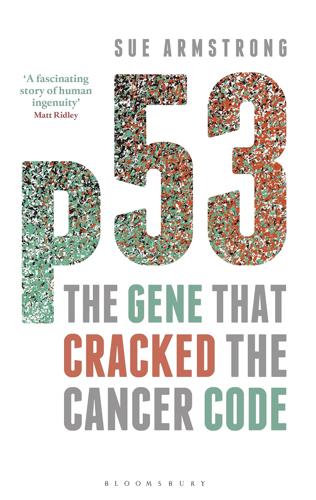
P53: The Gene That Cracked the Cancer Code
by
Sue Armstrong
Published 20 Nov 2014
Meanwhile, at MIT in Boston, Tyler Jacks – renowned for creating one of the two first p53 knock-out mice in 1992 – was on the same track. His lab was busy generating two different mouse models that mimicked LFS – one with the same point mutation as Lozano’s mice, corresponding to human R175H, and another corresponding to R273H. The two groups published their findings in the same edition of Cell in December 2004. What distinguished their mouse models from others designed to test the activity of mutant p53 was that here the gene was being switched on naturally in response to signals from the cell’s environment. In most other models, the gene was switched on artificially by the researchers – and herein lay the big sticking point.
…
See www.nobelprize.org/nobel_prizes/medicine/laureates/1997 Other key references were two papers, published simultaneously in the same journal, Cell, Volume 119, 2004, by Tyler Jacks and Gigi Lozano and their colleagues: ‘Mutant p53 Gain of Function in Two Mouse Models of Li-Fraumeni Syndrome’ by Kenneth P Olive et al. (847–860) and ‘Gain of Function of a p53 Hot Spot Mutation in a Mouse Model of Li-Fraumeni Syndrome’ by Gene A Lang et al. (861–872). See also ‘Mutant p53: one name, many proteins’ by William A. Freed-Pastor and Carol Prives, in Genes and Development, 2012, Volume 26, 1268–86. Chapter 19: Cancer and Ageing – a Balancing Act?
…
At MIT Lowe met Tyler Jacks, a young researcher who had picked up Capecchi and colleagues’ new technology with enthusiasm and was busy creating transgenic mice of all kinds to investigate cancer-related genes. Jacks had made some knock-out mice in which various tumour suppressors had been deleted and he was asking the simple and obvious question: do the animals get cancer? He had a mouse model with p53 knocked out, but he had been beaten to it in his experiments by another scientist who had been investigating the same question, so his p53 knock-out mice were sitting around with not much to do. Jacks was happy to let Lowe suggest alternative experiments with them. Lowe was already fascinated by apoptosis.

Ageless: The New Science of Getting Older Without Getting Old
by
Andrew Steele
Published 24 Dec 2020
The halo was caused by a chemical secreted by the mould which was toxic to bacteria – eventually isolated and named penicillin after the Penicillium fungus in which it was discovered. *A ‘mouse model’ is what scientists call mice genetically modified to be at risk of a human disease, either because waiting around for them to get it would take a long time or, in the case of some conditions like Alzheimer’s and Parkinson’s, because mice don’t suffer from them at all. This means that there are caveats when trying to translate findings from mice to humans – but it’s often a vital first step in understanding how new treatments work. Nonetheless, bear in mind both in this book and elsewhere that a mouse model is one step further removed from the clinic than an experiment in normal mice might be.
…
Even though doctors have been saying this for decades, reality is catching up very slowly. There’s a saying in paediatrics that children aren’t just small adults. There should be a similar refrain in geriatrics, that old people aren’t just old young people. The same problem plays out in mouse studies. ‘Mouse models’ of disease – which we’ve said before are often imperfect analogues – are particularly guilty in this regard. For example, a mouse model of Alzheimer’s might contain an extra copy of the amyloid precursor protein gene, and mice could develop amyloid deposits and cognitive impairment in mouse middle age, or even in youth, unlike most human patients. This means that the mice could be relatively healthy except for the additional amyloid – great if you want to single out its effects, but not so great if you want a realistic model of human dementia.
…
Subsequent studies have confirmed what will by now be a familiar refrain: that these longer-lived mice weren’t struggling on in frailty, but staying younger for longer, with fewer and less severe age-related diseases. Rapamycin slows cell death and improves cognitive performance in the brains of mouse models* of Parkinson’s and Alzheimer’s, and improves the functioning of arteries in diabetic mice, probably by stimulating autophagy. This is an impressive proof of principle for DR mimetics – after a tortuous tale taking us from a Pacific island via a home freezer to some unintentionally elderly mice, we have a result which sounds like it’s crying out for human translation: even if started very late in life, rapamycin can extend lifespan and healthspan.
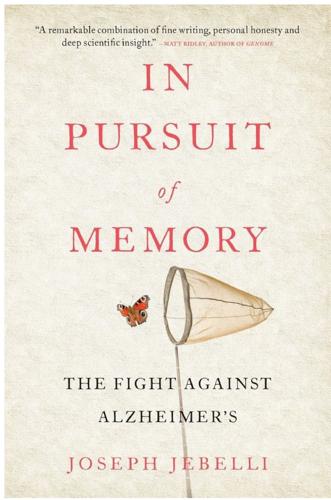
In Pursuit of Memory: The Fight Against Alzheimer's
by
Joseph Jebelli
Published 30 Oct 2017
., ‘Induction of pluripotent stem cells from adult human fibroblasts by defined factors’. 5. Van der Worp, Howells, et al., ‘Can animal models of disease reliably inform human studies?’. 6. Warren, Tompkins, et al., ‘Mice are not men’. 7. Seok, Warren, et al., ‘Genomic responses in mouse models poorly mimic human inflammatory diseases’. 8. De Souza, ‘Mouse model challenged’. 9. Choi, Kim, et al., ‘A three-dimensional human neural cell culture model of Alzheimer’s disease’. 10. Hallett, Cooper, et al., ‘Long-term health of dopaminergic neuron transplants in Parkinson’s disease patients’. 11. Blurton-Jones, Kitazawa, et al., ‘Neural stem cells improve cognition via BDNF in a transgenic model of Alzheimer disease’. 12.
…
., Ending Aging: The Rejuvenation Breakthroughs That Could Reverse Human Aging in Our Lifetime, St Martin’s Griffin, 2008 De Souza, N., ‘Mouse model challenged’, Nature Methods, 10 (4), 2013, 288 De Strooper, B., and Karran, E., ‘The cellular phase of Alzheimer’s disease’, Cell, 164 (4), 2016, 603–15 Di Luca, M., and Olesen, J., ‘The cost of brain diseases: a burden or a challenge?’, Neuron, 82 (6), 2014, 1205–8 Drachman, D. A., and Leavitt, J., ‘Human memory and the cholinergic system. A relationship to aging?’, Archives of Neurology, 30 (2), 1974, 113–21 Drake, A. C., ‘Of mice and men: what rodent models don’t tell us’, Cellular & Molecular Immunology, 10 (4), 2013, 284–5 Duff, K., and Hardy, J., ‘Mouse model made’, Nature, 373 (6514), 1995, 476–7 Eisele, Y.
…
On the table were gene-editing techniques to study the effects of inserting or removing single genes; fluorescent probes to track the early signs of plaques and tangles; and even, perhaps, a cellular road map to boost cognition beyond what is natural. As for therapeutics, their greatest strength is undoubtedly their human origin. Besides the shortcomings of mice to mirror dementia, studies also found that screening drugs in mice was far from ideal. In 2010 it was estimated that 90 per cent of drugs based on mouse models fail in clinical trials.5 The reason: unlike mice found in the wild, lab mice are inbred, and therefore don’t capture the huge genetic variation seen in people. And although their genome is very similar to ours, the way they use it–how they switch genes on and off–is very different. As the Harvard physician H.
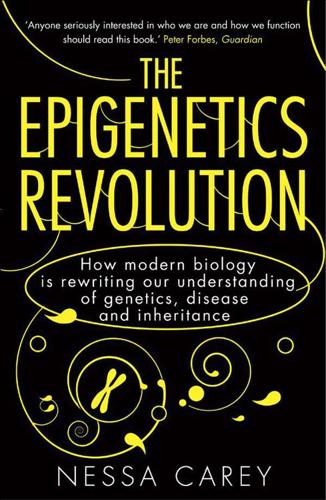
Epigenetics Revolution: How Modern Biology Is Rewriting Our Understanding of Genetics, Disease and Inheritance
by
Nessa Carey
Published 31 Aug 2011
In the rat model, the decreased DNA methylation of the cortisol receptor gene is a ‘good’ thing. It leads to increased production of this receptor, and a general dampening down of the stress response. In the mouse model, the decreased DNA methylation of the arginine vasopressin gene is a ‘bad’ thing. It leads to increased expression of this hormone and a stimulation of the stress response. The decreased DNA methylation of the arginine vasopressin gene in the mouse model occurred through a different route to the one used in the rat hippocampus to activate the cortisol receptor gene. In the mouse studies, separation from the mother triggered activity of the neurons in the hypothalamus.
…
Use the four Yamanaka factors to create a large number of iPS cells, treat these in the lab to turn them into beta cells and put them back into the patient. There will be no immune rejection because Freddy will just be receiving Freddy cells. Recently, researchers have shown they can do exactly this in mouse models of diabetes4. It won’t be that simple of course. There are a whole range of technological hurdles to overcome, not least the fact that one of the four Yamanaka factors, c-Myc, is known to promote cancer. But in the few years since that key publication in Cell, substantial progress has been made in improving the technology so that it is moving ever closer to the clinic.
…
Nobody knew if it would be possible to reverse a neurodevelopmental problem such as mental retardation once it had become established, but the general feeling about this wasn’t optimistic. Adrian Bird remains a major figure in our story. In 2007 he published an astonishing paper in Science, in which he and his colleagues showed that Rett syndrome could be reversed, in a mouse model of the disease. Adrian Bird and his colleagues created a cloned strain of mice in which the Mecp2 gene was inactivated. They used the types of technologies pioneered by Rudolf Jaenisch. These mice developed severe neurological symptoms, and as adults they exhibited hardly any normal mouse activities.
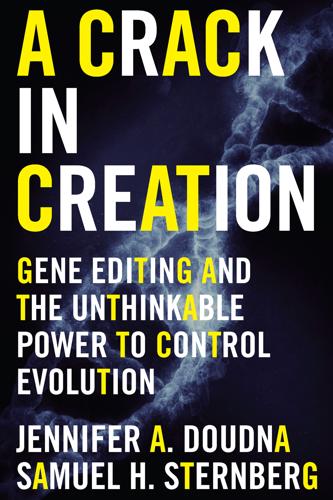
A Crack in Creation: Gene Editing and the Unthinkable Power to Control Evolution
by
Jennifer A. Doudna
and
Samuel H. Sternberg
Published 15 Mar 2017
Before CRISPR, the arsenal of tools to study cancer-causing mutations was rather limited: scientists could detect and diagnose mutations in biopsies taken from patients, and they could study a small number of discrete mutations in mouse models. But now that researchers have a way to precisely replicate cancer-causing mutations—single ones, or many at a time—in a fraction of the time that was previously required and at a fraction of the cost, cancer research is poised to explode. Instead of painstakingly selecting the correctly mutated cells (an ordeal with one-in-a-million efficiencies) or breeding the desired mouse models over numerous generations (requiring years of time), scientists can use CRISPR to efficiently introduce mutations in a single pass.
…
One strain of AAV might be best suited to deliver CRISPR to cells of the liver, while another might work best in the central nervous system, the lungs, the eyes, or the cardiac and skeletal muscles. It’s in muscles where we’ve seen one of the earliest and most dramatic demonstrations that CRISPR can ameliorate the ravaging effects of genetic disease in vivo. While the technique was demonstrated in a mouse model, there’s every reason to think that it will be effective in human subjects as well—not least because the genetic disease it was used to treat is, sadly, prevalent in our species. The fatal muscle-wasting disease known as Duchenne muscular dystrophy (DMD) is the most common type of muscular dystrophy in the world, inherited by roughly 1 in every 3,600 male babies.
…
For instance, using a version of CRISPR programmed to edit a different gene and a version of AAV better suited to target the liver, a team at MIT used gene editing to cure mice of a genetic mutation that causes a condition known as tyrosinemia. In humans, the disease can cause an accumulation of toxic metabolites and extensive liver damage; if untreated, patients usually die before age ten. In the mouse model, however, CRISPR repaired the damaged gene and reversed the course of the disease. AAV has also delivered CRISPR into the brains of adult mice, into their lungs, and into retinal cells in their eyes, all of which may eventually translate into therapies to treat genetic disorders like Huntington’s disease, cystic fibrosis, and congenital blindness.
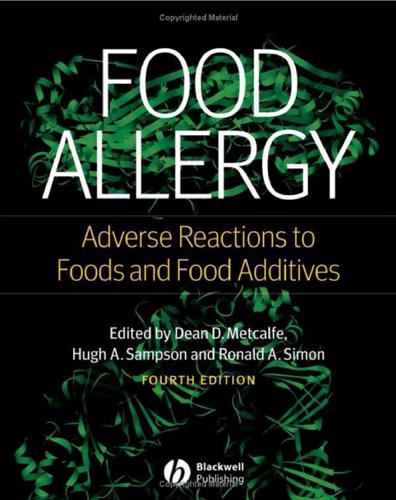
Food Allergy: Adverse Reactions to Foods and Food Additives
by
Dean D. Metcalfe
Published 15 Dec 2008
Sensitization to peanut protein was demonstrated by application of skin preparations containing peanut oil to inflamed skin in children [37]. Similar results were obtained by Hsieh’s group in epicutaneous sensitized mice to the egg protein OVA [38]. The dose of antigen administered is also critical to the form of oral tolerance generated. In mouse models, low doses of antigen appear to activate regulatory/suppressor T-cells [39,40]. There are an increasing number of such cells identified, of both CD4 and CD8 lineages. Th3 cells were the initial regulatory/suppressor cells described in oral tolerance [40–42]. These cells appear to be activated in the PP and secrete transforming growth factor-β (TGFβ).
…
This cytokine plays a dual role in mucosal immunity; it is a potent suppressor of T- and B-cell responses while promoting the production of IgA (it is the IgA switch factor) [34,43–45]. TGF-β is the most potent immunosuppressive cytokine defined and its activities are broad and non-specific. A recent investigation of the adaptive immune response to cholera toxin B subunit and macrophage-activating lipopeptide-2 in mouse models lacking the TGF-βR in B-cells (TGFβRII-B) demonstrated undetectable levels of antigen-specific IgA-secreting cells, serum IgA, and secretory IgA (SIgA) [46]. These results demonstrate the critical role of TGF-βR in antigen-driven stimulation of SIgA responses in vivo. The production of TGF-β by Th3 cells elicited by low-dose antigen administration helps explain an associated phenomenon of oral tolerance, bystander suppression.
…
As mentioned earlier, oral tolerance is antigen specific, but if a second antigen is co-administered systemically with the tolerogen, suppression of T- and B-cell responses to that antigen will occur as well. The participation of other regulatory T-cells in oral tolerance is less well defined. Tr1 cells produce interleukin (IL)-10 and appear to be involved in the suppression of graft-versus-host disease (GVHD) and colitis in mouse models, but their activation during oral antigen administration has not been as clearcut [47–49]. Frossard et al. demonstrated increased antigen induced IL-10 producing cells in PP from tolerant mice after β-lactoglobulin feeding but not in anaphylactic mice, suggesting that reduced IL-10 production in PPs may support food allergies [50].
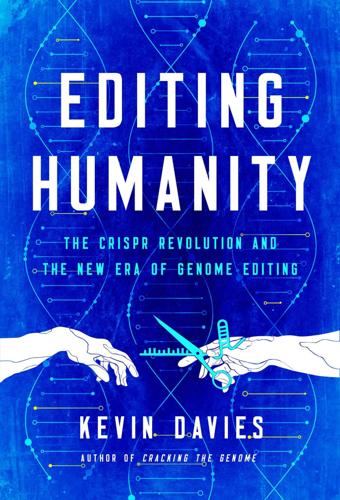
Editing Humanity: The CRISPR Revolution and the New Era of Genome Editing
by
Kevin Davies
Published 5 Oct 2020
That’s what I’d expect her to say, but Liu’s group has already used base editing to correct a mouse model of a rare but devastating genetic disease. Progeria, or Hutchinson-Gilford progeria syndrome, is a dominantly inherited disease caused by a single-base mutation in the laminA gene that results in extreme premature aging. The mutant protein, called progerin, wreaks damage in the aorta and other tissues. Affected children rarely live beyond fifteen years of age. Liu partnered with NIH director Francis Collins, who years earlier had developed a mouse model of the disease carrying the human progeria mutation. Liu’s team delivered the base editor via a pair of AAV vectors, using a molecular Velcro to splice the components together once inside the cell.
…
., “Phage-assisted evolution of an adenine base editor with improved Cas domain compatibility and activity,” Nature Biotechnology, March 20, 2020, https://www.nature.com/articles/s41587-020-0453-z. 19. Kevin Davies, “Base Editing Promise in Treating a Mouse Model of Progeria,” Genetic Engineering & Biotechnology News, February 14, 2020, https://www.genengnews.com/news/base-editing-promise-in-treating-a-mouse-model-of-progeria/. 20. Sharon Begley, “In its first tough test, CRISPR base editing slashes cholesterol levels in monkeys,” STAT, June 27, 2020, https://www.statnews.com/2020/06/27/crispr-base-editing-slashes-cholesterol-in-monkeys/. 21.
…
The system appeared safer than Cas9, for reasons that make sense: whereas CRISPR-Cas9 has just one base-pairing event (when the guide RNA aligns with the target sequence), prime editing has two additional pairing steps—the binding of the pegRNA to the target site and the pairing of the flap to the original site—which offer additional opportunities to reject an off-target sequence. “If any of those three pairing events fail, prime editing can’t proceed,” Liu said. As with the earlier CRISPR genome editors, delivery will be a big challenge, but Liu was confident he could deliver prime editors into animals, for example by using a pair of AAVs (as used in the progeria mouse model). On the safety question, Liu stressed that all genome editors have off-target effects—chemical binding is an imperfect process, just as all prescription drugs have some sort of side or off-target effect. “Each platform has complementary strengths. All will have roles in basic research and therapeutics,” Liu said, mindful that prime editing could steal some thunder from his earlier platform companies, Editas Medicine and Beam Therapeutics.
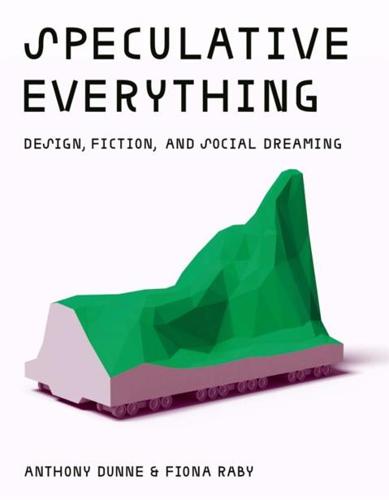
Speculative Everything: Design, Fiction, and Social Dreaming
by
Anthony Dunne
and
Fiona Raby
Published 22 Nov 2013
The first step was to acquire some genetic material containing Elvis's DNA, achieved when Barhad managed to purchase one of Elvis's hairs on eBay.' The next step would be to have the DNA sequenced to identify behavioral traits such as sociability, athletic performance, and susceptibility to addiction and obesity. Barhad then identified a company that creates mouse models for scientific experiments and would in theory be able to produce a transgenic Elvis mouse using the genetic material he provided. Next, Barhad built a tower of custom designed environments based on ones used in laboratories to test traits in genetically modified mice. Each compartment simulated key biographical moments in Elvis's life.
…
Although it is not possible for designers to build actual products using biotechnology yet, we should not let that stop us from getting involved; we can still create functional fictions that help us explore the kind of biotechnological world we wish to live in. Koby Barhad, All That 1 Am: From a Speck of Hair to Elvis Presley's Mouse Model, 2012. © Koby Barhad. The universe of possible worlds is constantly expanding and diversifying thanks to the incessant world-constructing activity of human minds and hands. Literary fiction is probably the most active experimental laboratory of the world-constructing enterprise.' Although design usually references sculpture and painting for material, formal and graphic inspiration, and more recently the social sciences for protocols on working with and studying people-if we are interested in shifting design's focus from designing for how the world is now to designing for how things could be-we will need to turn to speculative culture and what Lubom r Dolezel has called an "experimental laboratory of the world-constructing enterprise."
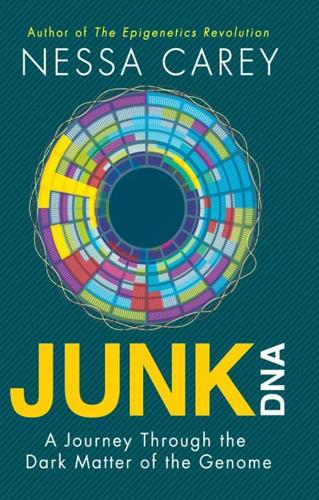
Junk DNA: A Journey Through the Dark Matter of the Genome
by
Nessa Carey
Published 5 Mar 2015
This leads to increased production of the beta-amyloid that is essential for the formation of the plaques.31 It’s been reported that the levels of this long non-coding RNA are increased in the brains of patients with Alzheimer’s disease, but it’s difficult to interpret these data. This could just be a consequence of increased expression in that region generally. Remember the earlier analogy – the more you chop up logs, the more sawdust you create. But researchers managed to find a way of specifically decreasing the expression of just the long non-coding RNA in a mouse model which frequently develops Alzheimer’s pathology. The knockdown of the long non-coding RNA resulted in decreased BACE1 protein and fewer beta-amyloid plaques. This supports the idea that the long non-coding RNA may play a causative role in this devastating disease.32 It’s not just the central nervous system that can be influenced by long non-coding RNAs.
…
But where we have this uncertainty – parent and child with the same genetic change but different symptoms – it’s vital to develop additional lines of evidence to support any hypothesis about the impact of the variant base. The researchers who identified the C to T change in the enhancer did exactly this, by testing the effect of this change in a mouse model. They showed that when the C was present, this stretch of junk DNA acted as an enhancer of morphogen expression. But when the C was replaced by a T the region no longer acted as an enhancer, and levels of the morphogen never reached the critical levels in the brain. Morphogens and the pancreas The morphogen that is implicated in the development of extra digits or in the various forms of holoprosencephaly isn’t the only example of a human condition caused by a change in a regulatory region of DNA.
…
Researchers used these mice and applied genetic techniques to dial down the expression of one of the key messenger RNAs that would normally be controlled by the Fragile X protein. When they did this, the scientists detected marked improvements in the animals. Spatial memory was better and the mice behaved appropriately around other mice. They were also less susceptible to seizures than the standard Fragile X mouse models. These symptomatic improvements were consistent with underlying changes that the scientists detected in the brains of the animals.14 Neurons in normal brains have little mushroom-shaped spines that are characteristic of strong, mature connections. The neurons of humans and mice with Fragile X syndrome have fewer of these, and a larger number of long, spindly, immature connections.
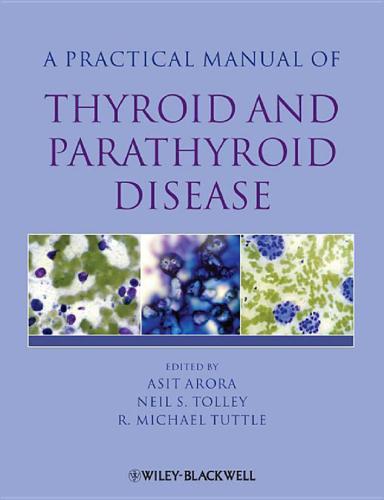
Practical Manual of Thyroid and Parathyroid Disease
by
Asit Arora
,
Neil Tolley
and
R. Michael Tuttle
Published 2 Jan 2009
It was found to abrogate tumour growth in BRAF mutant xenografts derived from various tumour types.203 RAS and BRAF inhibition has been shown to result in re-differentiation with resultant re-expression of thyroid-specific genes, including the NIS gene.204,205 MAPK inhibition may not only inhibit tumour growth, but also restore radioactive iodine avidity in a significant proportion of de-differentiated/ advanced thyroid cancers. In addition to MAPK signalling, several studies have assessed the feasibility of PI3K/AKT inhibition and p53 targeting in thyroid cancer. Furuya et al. demonstrated that LY294002, a potent PI3K inhibitor, reduced tumour cell proliferation and blocked metastatic spread of thyroid tumours in a mouse model of follicular thyroid cancer.206 Treatment of thyroid cancer cells with the AKT inhibitor KP372-1 also suppressed cell proliferation and induced apoptosis in thyroid cancer cells.207 Other promising agents include histone deacetylase inhibitors and PPARγ expression ligands.208–214 It is hoped that these efforts will substantially improve the outcome of patients with aggressive, refractory, metastatic disease.
…
Mod Pathol 2005;18: 1127–33. 166. Katoh R, et al. Expression of vascular endothelial growth factor (VEGF) in human thyroid neoplasms. Hum Pathol 1999;30:891–7. 167. Bauer AJ, et al. Systemic administration of vascular endothelial growth factor monoclonal antibody reduces the growth of papillary thyroid carcinoma in a nude mouse model. Ann Clin Lab Sci 2003;33:192–9. 168. Bauer AJ, et al. Vascular endothelial growth factor monoclonal antibody inhibits growth of anaplastic thyroid cancer xenografts in nude mice. Thyroid 2002;12:953– 61. 169. Vella V, et al. The IGF system in thyroid cancer: new concepts. Mol Pathol 2001;54:121–4. 170.
…
The oncogene BRAF V600E is associated with a high risk of recurrence and less differentiated papillary thyroid carcinoma due to the impairment of Na+/I– targeting to the membrane. Endocr Relat Cancer 2006;13:257–69. 206. Furuya F, et al. Inhibition of phosphatidylinositol 3′ kinase delays tumor progression and blocks metastatic spread in a mouse model of thyroid cancer. Carcinogenesis 2007;28: 2451–8. 207. Mandal M, et al. The Akt inhibitor KP372-1 suppresses Akt activity and cell proliferation and induces apoptosis in thyroid cancer cells. Br J Cancer 2005;92:1899– 905. 208. Shao Y, et al. Apoptotic and autophagic cell death induced by histone deacetylase inhibitors.
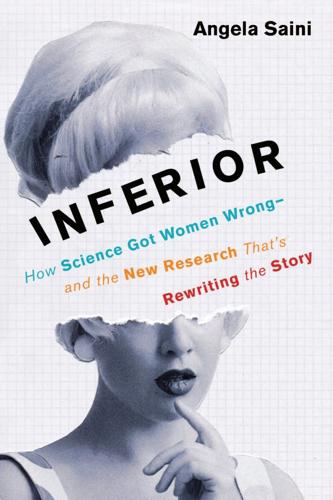
Inferior: How Science Got Women Wrong-And the New Research That's Rewriting the Story
by
Angela Saini
Published 29 May 2017
“A second example is that if we give the mouse a heart attack, the animals with two X chromosomes do worse than the animals with one X chromosome,” he adds. “And the third example in the mouse model is with multiple sclerosis, where we induced a multiple sclerosis–like disease in the mouse, and the animals that are XX do worse than the animals that are XY.” Multiple sclerosis in humans, being an autoimmune disease, affects more women than men. Their take-home message is that many of the sex differences we see in health are rooted deep down in genetics. “The study of mouse models has provided convincing evidence that cells with two X chromosomes are intrinsically different from those with one X chromosome.
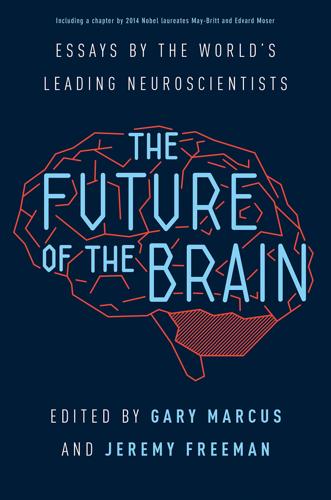
The Future of the Brain: Essays by the World's Leading Neuroscientists
by
Gary Marcus
and
Jeremy Freeman
Published 1 Nov 2014
A cheap and rapid method for deciphering the wiring diagram of a neural circuit or of an entire organism would have a profound impact on neuroscience research. Many neuropsychiatric diseases such as autism and schizophrenia are thought to result from disrupted neuronal connectivity, but identifying the disruptions even in mouse models is a major challenge given current technology. More fundamentally, knowledge of the neuronal wiring diagram would provide a foundation for understanding neuronal function and development in the same way that knowing the complete genomic sequence provides the starting point for much of modern biological research in the postgenomic era.
…
Indeed, there has been much interest in the demonstration of protein-coding differences between FOXP2 in humans and chimpanzees (as well as more recent work on human-Neanderthal sequence differences elsewhere in this gene). Again, functional experiments are playing a central part in helping scientists to assess the biological relevance of the sequence changes, using the same systems (cell lines, mouse models, and such) as those used for investigating the mutations that cause disorder. Even so, if we want to comprehensively join the dots between genes and human cognition, we cannot only depend on growing cells in the laboratory or making genetically modified animals. In recent years a new weapon has been added to the armory, one that could be powerful for making links to the human brain but that has to be wielded with care.
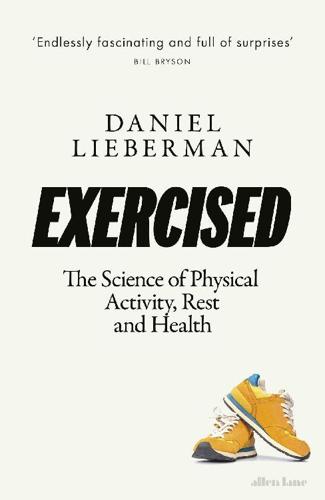
Exercised: The Science of Physical Activity, Rest and Health
by
Daniel Lieberman
Published 2 Sep 2020
J. (1997), Alzheimer’s disease: From genes to pathogenesis, American Journal of Psychiatry 5:1198; Niedermeyer, E. (2006), Alzheimer disease: Caused by primary deficiency of the cerebral blood flow, Clinical EEG Neuroscience 5:175–77. 106 Baker-Nigh, A., et al. (2015), Neuronal amyloid-β accumulation within cholinergic basal forebrain in ageing and Alzheimer’s disease, Brain 138:1722–37. 107 Shi, Y., et al. (2017), ApoE4 markedly exacerbates tau-mediated neurodegeneration in a mouse model of tauopathy, Nature 549:523–27. Another interesting hypothesis possibly related to astrocyte function is that reduced sleep increases vulnerability to Alzheimer’s by compromising maintenance functions such as plaque removal. See Neese, R. M., Finch, C. E., and Nunn, C. L. (2017), Does selection for short sleep duration explain human vulnerability to Alzheimer’s disease?
…
., and Polk, J. D. (2013), Linking brains and brawn: Exercise and the evolution of human neurobiology, Proceedings of the Royal Society B: Biological Science 280:20122250. 115 Choi, S. H., et al. (2018), Combined adult neurogenesis and BDNF mimic exercise effects on cognition in an Alzheimer’s mouse model, Science 361:eaan8821. 116 Weinstein, G., et al. (2014), Serum brain-derived neurotrophic factor and the risk for dementia: The Framingham Heart Study, JAMA Neurology 71:55–61. 117 Giuffrida, M. L., Copani, A., and Rizzarelli, E. (2018), A promising connection between BDNF and Alzheimer’s disease, Aging 10:1791–92. 118 Paillard, T., Rolland, Y., and de Souto Barreto, P. (2015), Protective effects of physical exercise in Alzheimer’s disease and Parkinson’s disease: A narrative review, Journal of Clinical Neurology 11:212–19. 119 Adlard, P.
…
., et al. (2008), Exercise training acts as a therapeutic strategy for reduction of the pathogenic phenotypes for Alzheimer’s disease in an NSE/APPsw-transgenic model, International Journal of Molecular Medicine 22:529–39; Belarbi, K., et al. (2011), Beneficial effects of exercise in a transgenic mouse model of Alzheimer’s disease-like Tau pathology, Neurobiology of Disease 43:486–94; Leem, Y. H., et al. (2011), Chronic exercise ameliorates the neuroinflammation in mice carrying NSE/htau23, Biochemical and Biophysical Research Communications 406:359–65. 120 Panza, G. A., et al. (2018), Can exercise improve cognitive symptoms of Alzheimer’s Disease?
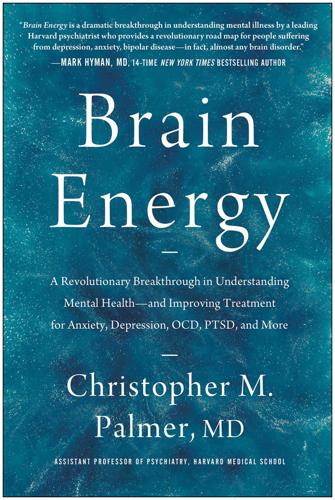
Brain Energy: A Revolutionary Breakthrough in Understanding Mental Health--And Improving Treatment for Anxiety, Depression, OCD, PTSD, and More
by
Christopher M. Palmer Md
Published 15 Nov 2022
The parts of the brain that control feeding behaviors are impacted, but so are the parts of the brain that interpret how they perceive their bodies. They can develop severe distortions in body image, thinking they are fat when they are truly emaciated. This sometimes verges on delusional, because the way they perceive themselves can be so far removed from how they really look. Researchers looked at a mouse model of anorexia to see if, in fact, there is mitochondrial impairment in the brain, and sure enough, they found oxidative stress and impairment of specific parts of mitochondria within the hypothalamus.23 A study of forty women, half with anorexia and the other half without, found mitochondrial dysfunction in the white blood cells of those with anorexia.24 However, other people can develop an eating disorder because of a preexisting vulnerability.
…
“An Energetic View of Stress: Focus on Mitochondria.” Front Neuroendocrinol 49 (2018): 72–85. doi: 10.1016/j.yfrne.2018.01.001. 5Chongyang Chen, Chao Yang, Jing Wang, Xi Huang, Haitao Yu, Shangming Li, Shupeng Li, et al. “Melatonin Ameliorates Cognitive Deficits Through Improving Mitophagy in a Mouse Model of Alzheimer’s Disease.” J Pineal Res 71(4) (2021): e12774. doi: 10.1111/jpi.12774. 6 H. Zhao, H. Wu, J. He, et al. “Frontal Cortical Mitochondrial Dysfunction and Mitochondria-Related ß-Amyloid Accumulation by Chronic Sleep Restriction in Mice.” Neuroreport 27(12) (2016): 916–922. doi: 10.1097/WNR.0000000000000631. 7C.
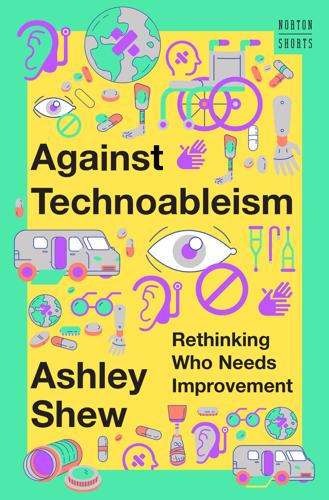
Against Technoableism: Rethinking Who Needs Improvement
by
Ashley Shew
Published 18 Sep 2023
The panelists then had a whole aside about the supposedly autistic mice being a very bad approximation for anything autistic, calling the models laughable, ridiculous, and based on a poor interpretation of autistic behavior. Human-development scholar Carolyn Shivers explained that one of the ways they produce “autistic” mice is by cutting their corpus callosum—which, of course, has nothing to do with the mechanism by which autism occurs in people. When autism is studied in mouse models like this, misunderstanding arises in serious ways—both among researchers, like the poster presenter next to Awni, and among the general public who are looking for information for their loved ones. I see a similar thing happen regularly in my cancer groups. People will get very excited about “in vitro” studies of different compounds killing cancer cells and then project that into all sorts of things they could try at home, not understanding that “in vitro” is in a petri dish (and “in vivo” would be in an animal).
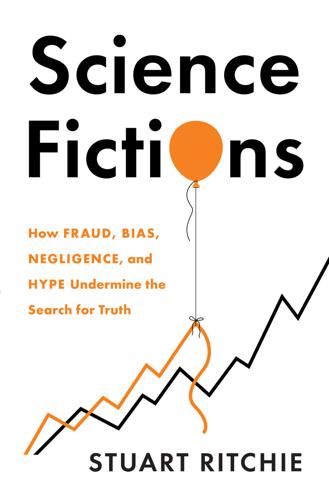
Science Fictions: How Fraud, Bias, Negligence, and Hype Undermine the Search for Truth
by
Stuart Ritchie
Published 20 Jul 2020
Though in some of their analyses, they only used samples from five autistic children and three controls. 80. Gil Sharon et al., ‘Human Gut Microbiota from Autism Spectrum Disorder Promote Behavioral Symptoms in Mice’, Cell 177, no. 6 (May 2019): 1600-1618. e17; https://doi.org/10.1016/j.cell.2019.05.004 81. Derek Lowe, ‘Autism Mouse Models for the Microbiome?’, In the Pipeline, 31 May 2019; https://blogs.sciencemag.org/pipeline/archives/2019/05/31/autism- mouse-models-for-the-microbiome 82. Sharon et al., ‘Human Gut Microbiota’, p.1162. 83. California Institute of Technology, ‘Gut Bacteria Influence Autism-like Behaviors in Mice’ (news release), 30 May 2019; https://www.eurekalert.org/pub_ releases/2019-05/ciot-gbi052319.php 84.
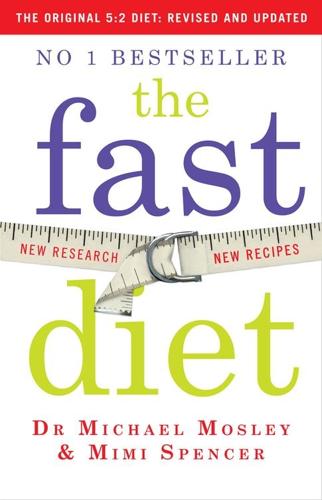
The Fast Diet: Revised and Updated: Lose Weight, Stay Healthy, Live Longer
by
Mimi Spencer
Published 18 Dec 2014
Proceedings of the National Academy of Science USA, January 2011 14. Halagappa, VK, Guo, Z, Pearson, M, Matsuoka, Y, Cutler, RG, Laferla, FM and Mattson, MP, National Institute on Ageing, Baltimore, MD, US. ‘Intermittent fasting and caloric restriction ameliorate age-related behavioral deficits in the triple-transgenic mouse model of Alzheimer’s disease’. Neurobiology of Disease, April 2007 15. Shirayama, Y, Chen, AC, Nakagawa, S, Russell, DS and Duman, RS, Yale University School of Medicine, New Haven, Connecticut, US. ‘Brain-derived neurotrophic factor produces antidepressant effects in behavioral models of depression’.
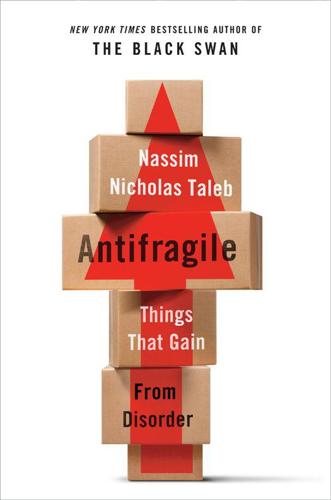
Antifragile: Things That Gain From Disorder
by
Nassim Nicholas Taleb
Published 27 Nov 2012
Oberyszyn, 2010, “Short-term Stress Enhances Cellular Immunity and Increases Early Resistance to Squamous Cell carcinoma.” Brain, Behavior and Immunity 24(1): 127–137. Dhabhar, F. S., A. N. Saul, T. H. Holmes, C. Daugherty, E. Neri, J. M. Tillie, D. Kusewitt, T. M. Oberyszyn, 2012, “High-Anxious Individuals Show Increased Chronic Stress Burden, Decreased Protective Immunity, and Increased Cancer Progression in a Mouse Model of Squamous Cell Carcinoma.” PLOS ONE 7(4): e33069. Diamond, Jared, 1988, “Why Cats Have Nine Lives.” Nature, Vol. 332, April 14. Dixit, A. K. and R. S. Pindyck, 1994, Investment Under Uncertainty. Princeton, N.J.: Princeton University Press. Djebbar, Ahmed, 2001, Une histoire de la science arabe.
…
Journal of the Royal Statistical Society: Series D (The Statistician) 49(4): 531–539. Hajek, A., 2003, Interpretations of Probability. Citeseer. Halagappa, V.K.M., Z. Guo, et al., 2007, “Intermittent Fasting and Caloric Restriction Ameliorate Age-Related Behavioral Deficits in the Triple-Transgenic Mouse Model of Alzheimer’s Disease.” Neurobiology of Disease 26(1): Hald, Anders, 1998, A History of Mathematical Statistics from 1750 to 1930. New York: Wiley. Hald, Anders, 2003, A History of Probability and Statistics and Their Applications Before 1750. Hoboken, N.J.: Wiley. Haleblian, J., C. E. Devers, et al., 2009, “Taking Stock of What We Know About Mergers and Acquisitions: A Review and Research Agenda.”

Potatoes not Prozac
by
Kathleen DesMaisons, Ph. D.
Effect of isolation conditions on brain regional enkephalin and beta-endorphin levels and vocalizations in 10-day-old rat pups. Behav Neurosci, 1995. 109(1): 117–22. Sillaber, I., et al. Enhanced morphine-induced behavioural effects and dopamine release in the nucleus accumbens in a transgenic mouse model of impaired glucocorticoid (type II) receptor function: influence of long-term treatment with the antidepressant moclobemide. Neuroscience, 1998. 85(2): 415–25. Sipols, A. J., et al. Intraventricular insulin decreases kappa opioid-mediated sucrose intake in rats. Peptides, 2002. 23(12): 2181–87.
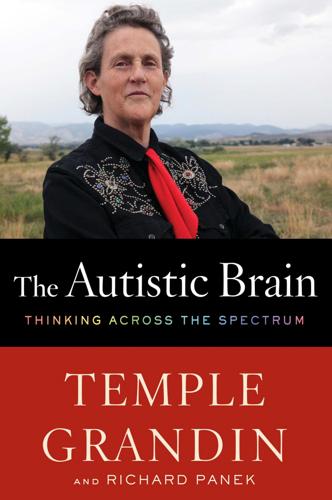
The Autistic Brain: Thinking Across the Spectrum
by
Temple Grandin
and
Richard Panek
Published 15 Feb 2013
., “Vision in Autism Spectrum Disorders,” Vision Research 49 (2009): 2705–39. [>] In a 2010 presentation: http://iacc.hhs.gov/events/2010/slides_susan_swedo_043010.pdf. [>] researchers have shown: See, for example, K. K. Chadman, “Fluoxetine but Not Risperidone Increases Sociability in the BTBR Mouse Model of Autism,” Pharmacology, Biochemistry, and Behavior 97, no. 3 (January 2011): 586–94. [>] A 2011 paper: Laura Pina-Camacho et al., “Autism Spectrum Disorder: Does Neuroimaging Support the DSM-5 Proposal for a Symptom Dyad? A Systematic Review of Functional Magnetic Resonance Imaging and Diffusion Tensor Imaging Studies,” Journal of Autism and Developmental Disorders 42, no. 7 (July 2012): 1326–41. [>] intermittent explosive disorder: See, for example, Emil F.

Immortality, Inc.
by
Chip Walter
Published 7 Jan 2020
: Multi-Millionaire Maverick, Says He Can Help You Live a Better, Longer Life.” New Republic, February 2, 2016. Hou, Yujun, Sofie Lautrup, Stephanie Cordonnier, Yue Wang, Deborah L. Croteau, Eduardo Zavala, Yongqing Zhang, et al. “NAD+ Supplementation Normalizes Key Alzheimer’s Features and DNA Damage Responses in a New AD Mouse Model With Introduced DNA Repair Deficiency.” PNAS 115, no. 8 (2018): E1876–85. www.pnas.org/content/115/8/E1876. Ingraham, Christopher. “Americans Are Dying Younger Than People in Other Rich Nations.” Washington Post, December 27, 2017. washingtonpost.com/news/wonk/wp/2017/12/27/americans-are-dying-younger-than-people-in-other-rich-nations.
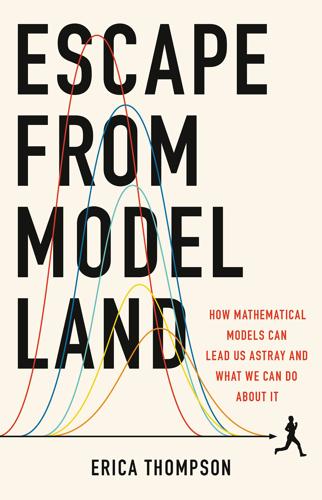
Escape From Model Land: How Mathematical Models Can Lead Us Astray and What We Can Do About It
by
Erica Thompson
Published 6 Dec 2022
Past performance is no guarantee of future success The question that we are starting to address by thinking about adequacy-for-purpose, and which we will explore more in the next chapter, is the extent to which a model can give us reliable, meaningful information about the real world. How far is the model really behaving like the real world, in the ways that matter to us? Which ways are the ways that matter? Whether it is a hydraulic model of the economy or a mouse model of human disease, the model can only be evaluated after defining our real-world priorities. But it is easy to slide over these questions of model evaluation without really addressing them. The language of model ‘verification’ and ‘confirmation’ – used in various fields of economics, computing, business and science – implies that a model can be verified or confirmed to be correct, when in most cases it is a simple category error to treat models as something that can be true or false.
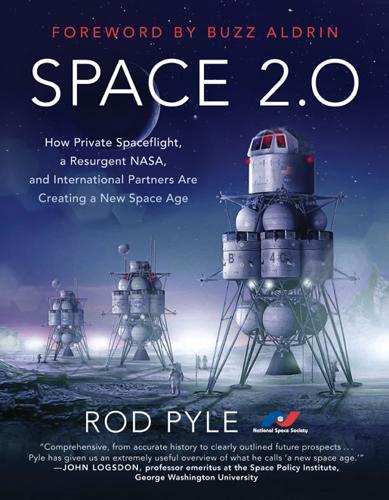
Space 2.0
by
Rod Pyle
Published 2 Jan 2019
Science 340, no. 6136 (May 31, 2013): 1080–4. 39By comparison, a person on Earth receives the equivalent of about 1/1000 sievert per year. 40Cherry, Jonathan D., Bin Liu, Jeffrey L. Frost, Cynthia A. Lemere, Jacqueline P. Williams, John A. Olschowka, M. Kerry O’Banion, and Douglas L. Feinstein. “Galactic Cosmic Radiation Leads to Cognitive Impairment and Increased Aβ Plaque Accumulation in a Mouse Model of Alzheimer’s Disease.” University of IIllinois, 2012. 41Revolutionary Concepts of Radiation Shielding for Human Exploration of Space. NASA publication, National Technical Information Service, NASA/TM—2005–213688, 2005. 42The estimated costs of a single pound to launch vary depending on the source.
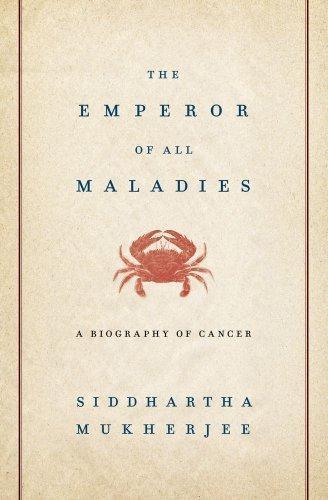
The Emperor of All Maladies: A Biography of Cancer
by
Siddhartha Mukherjee
Published 16 Nov 2010
Since different drugs elicited different resistance mechanisms, and produced different toxicities in cancer cells, using drugs in concert dramatically lowered the chance of resistance and increased cell killing. Two drugs were therefore typically better than one, and three drugs better than two. With several drugs and several iterative rounds of chemotherapy in rapid-fire succession, Skipper cured leukemias in his mouse model. For Frei and Freireich, Skipper’s observations had an inevitable, if frightening, conclusion. If human leukemias were like Skipper’s mouse leukemias, then children would need to be treated with a regimen containing not one or two, but multiple drugs. Furthermore, a single treatment would not suffice.
…
It was at these afternoon conferences that Frei began to introduce the idea of megadose combination chemotherapy with autologous marrow support to the fellows and junior faculty. In the fall of 1983, he invited Howard Skipper, the soft-spoken “mouse doctor” who had so deeply influenced Frei’s early work, to speak. Skipper was inching toward higher and higher doses of cytotoxic drugs in his mouse models and spoke enthusiastically about the possibility of curative treatment with these megadose regimens. He was soon after followed by Frank Schabel, another scientist who had demonstrated that combining agents, in doses lethal for the marrow, possessed synergistic effects on mouse tumors. Schabel’s lecture was particularly galvanizing, a “seminal event,” as Peters described it.
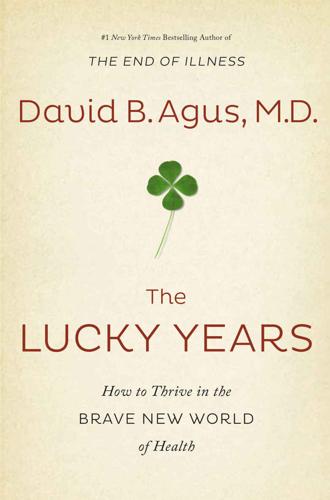
The Lucky Years: How to Thrive in the Brave New World of Health
by
David B. Agus
Published 29 Dec 2015
Meanwhile, the brain’s janitors are at work to sweep out any toxic debris that can gum up its systems if left to build up. Sigrid Veasey is a leading sleep researcher and a professor of medicine at Perelman School of Medicine at the University of Pennsylvania. She’s been working with mice to understand just what happens when the brain doesn’t get its break to conduct certain business. Using her mouse models, she’s found that when the brain is kept alert by neurons firing constantly, these brain cells shed free radicals as a byproduct of making energy.5 Free radicals are rogue molecules that have lost an electron and thus they are highly reactive in the body, damaging healthy cells and tissues. They can potentially be toxic to the brain if they are not swept up.
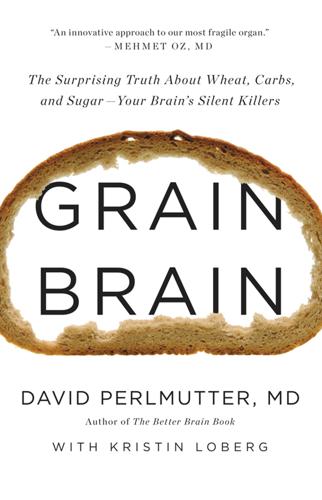
Grain Brain: The Surprising Truth About Wheat, Carbs, and Sugar--Your Brain's Silent Killers
by
David Perlmutter
and
Kristin Loberg
Published 17 Sep 2013
., “Effects of Beta-hydroxybutyrate on Cognition in Memory-impaired Adults,” Neurobiology of Aging 25, no. 3 (March 2004): 311–14. 24. Mary Newport, “What If There Was a Cure for Alzheimer’s Disease and No One Knew?” www.coconutketones.com/whatifcure.pdf (July 22, 2008). 25. I. Van der Auwera, et al., “A Ketogenic Diet Reduces Amyloid Beta 40 and 42 in a Mouse Model of Alzheimer’s Disease,” Nutrition & Metabolism 2 (October 17, 2005): 28. 26. D. R. Ziegler, et al., “Ketogenic Diet Increases Glutathione Peroxidase Activity in Rat Hippocampus,” Neurochemical Research 28, no. 12 (December 2003): 1793–97. 27. K. W. Barañano and A. L. Hartman, “The Ketogenic Diet: Uses in Epilepsy and Other Neurologic Illnesses,” Current Treatment Options in Neurology 10, no. 6 (November 2008): 410–19. 28.
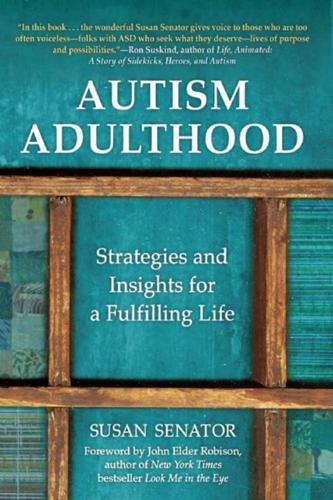
Autism Adulthood: Strategies and Insights for a Fulfilling Life
by
Susan Senator
Published 4 Apr 2016
Autism is now recognized as a heterogeneous disorder which can involve multiple organ systems including the brain, and which may have differing causes involving both environmental and genetic factors, resulting in differing neurobiologies and differing clinical presentations. All of this makes the search for effective treatments and interventions challenging. She talked to me a bit about mouse models and chimp studies. Such studies expand our body of useful knowledge, of course. We generally pursue animal studies with the idea that what we learn about biological mechanisms in these animals may one day be translated to help humans. However, occasionally, what we know about human disorders may in fact help animals, as illustrated by Dr.
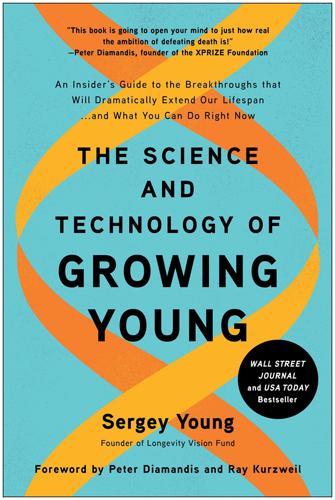
The Science and Technology of Growing Young: An Insider's Guide to the Breakthroughs That Will Dramatically Extend Our Lifespan . . . And What You Can Do Right Now
by
Sergey Young
Published 23 Aug 2021
., “National estimates of insulin-related hypoglycemia and errors leading to emergency department visits and hospitalizations,” JAMA internal medicine 174, no. 5 (2014), https://doi.org/10.1001/jamainternmed.2014.136. 5Associated Press, “Tons of drugs dumped into wastewater,” NBC News, last modified September 14, 2008, https://www.nbcnews.com/health/health-news/tons-drugs-dumped-wastewater-flna1c9459433. 6Fiona Barry et al., The golden age of innovation is beginning: Drug Delivery and Packaging Report 2019 (Paris: Pharmapack Europe, 2019). 7Sinclair and LaPlante, Lifespan, 130. 8Sinclair and LaPlante, Lifespan, 131. 9Simon C. Johnson et al., “mTOR inhibition alleviates mitochondrial disease in a mouse model of Leigh syndrome,” Science 342, no. 6165 (2013), https://doi.org/10.1126/science.1244360. 10Belinda Seto, “Rapamycin and mTOR: a serendipitous discovery and implications for breast cancer,” Clinical and translational medicine 1, no. 1 (2012), https://doi.org/10.1186/2001-1326-1-29. 11Search results from clinicaltrials.com 12Food and Drug Administration, Medication Guide: Rapamune (White Oak, MD: Food Drug Administration, 2017). 13John Parkinson, Theatrum Botanicum: the Theater of Plants.
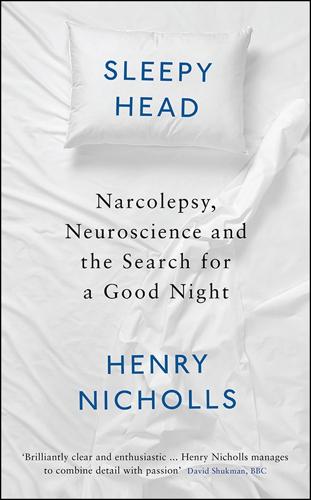
Sleepyhead: Narcolepsy, Neuroscience and the Search for a Good Night
by
Henry Nicholls
Published 1 Mar 2018
It was looking increasingly likely that the hypocretin system might somehow be involved in narcolepsy. That June, at the annual meeting of the American Academy of Sleep Medicine, Mignot was keeping his suspicions to himself, when a sleep scientist he’d never met cornered him and began to talk of a discovery in his own lab, claiming he had a mouse model of narcolepsy. ‘I see that pretty much every meeting,’ says Mignot, ‘so I rarely get excited.’ But as he began to extricate himself from the conversation, his eye caught the scientist’s name badge: Christopher Sinton, University of Texas, the precise same institution as Yanagisawa, who had described the hypocretins (or orexins, as he called them) the previous year.
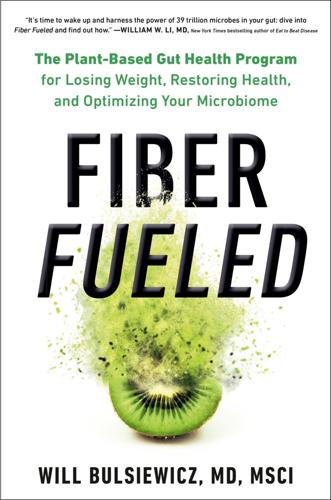
Fiber Fueled: The Plant-Based Gut Health Program for Losing Weight, Restoring Your Health, and Optimizing Your Microbiome
by
Will Bulsiewicz
Published 15 Dec 2020
I recommend consuming only non-GMO and organic soy in its whole-foods forms: edamame, tofu, miso, tempeh, tamari, and unsweetened soy milk. Model your soy consumption after the way they do it in Asia. For some delicious ways to consume soy, check out the recipes in Chapter 10. So how about the effect of legumes on the gut microbiota? In a mouse model, both navy beans and black beans increased numbers of beneficial SCFA-producing bacteria with coinciding increased SCFA production, promoted colonic barrier integrity, and reduced bacterial endotoxin levels. In a randomized crossover study, chickpea consumption for three weeks in addition to their regular diet led to increased growth of SCFA-producing bacteria (Faecalibacterium prausnitzii) and decreased growth of the pathogenic and putrefactive bacteria (Clostridium histolyticum and C. lituseburense).
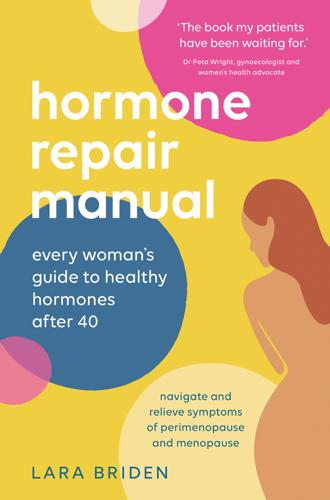
Hormone Repair Manual
by
Lara Briden
Published 14 Apr 2021
.: B Pang, LH Zhao, Q Zhou et al, ‘Application of berberine on treating type 2 diabetes mellitus’, International Journal of Endocrinology, 2015, article 905749. 207: With short-term use, berberine’s antimicrobial effects are . . .: L Gu, N Li, J Gong et al, ‘Berberine ameliorates intestinal epithelial tight-junction damage and down-regulates myosin light chain kinase pathways in a mouse model of endotoxinemia’, Journal of Infectious Diseases, 203(11), June 2011, pp1602–12. 207: Inositol or myo-inositol is another supplement . . .: A Santamaria, D Giordano, F Corrado et al, ‘One-year effects of myo-inositol supplementation in postmenopausal women with metabolic syndrome’, Climacteric, 15(5), October 2012, pp490–5. 208: Thyroid disease is more common in women . . .: EN Pearce, ‘Thyroid dysfunction in perimenopausal and postmenopausal women’, Menopause International, 13(1), March 2007, pp8–13. 210: The connection between perimenopause and thyroid disease is . . .: J Grunewald, ‘Repair your thyroid’, Experience Life, 27 March 2019, experiencelife.com/article/repair-your-thyroid 210: Losing progesterone reduces free or available thyroid hormone . . .: P Sathi, S Kalyan, CL Hitchcock et al, ‘Progesterone therapy increases free thyroxine levels – data from a randomized placebo-controlled 12-week hot flush trial’, Clinical Endocrinology (Oxford), 79(2), August 2013, pp282–7. 210: For example, we saw in Chapter 4 that the recalibration . . .: MK Desai & RD Brinton 2019, op. cit. 211: From a more holistic perspective, the presence of antibodies . . .: A Baric, L Brcic, S Gracan et al, ‘Thyroglobulin antibodies are associated with symptom burden in patients with Hashimoto’s thyroiditis: a cross-sectional study’, Immunological Investigations, 48(2), February 2019, pp198–209. 212: The problem is that you could have functional hypothyroidism . . .: S Razvi, S Bhana & S Mrabeti, ‘Challenges in interpreting thyroid stimulating hormone results in the diagnosis of thyroid dysfunction’, Journal of Thyroid Research, 2019, article 4106816; R Nair, S Mahadevan, RS Muralidharan & S Madhavan, ‘Does fasting or postprandial state affect thyroid function testing?’
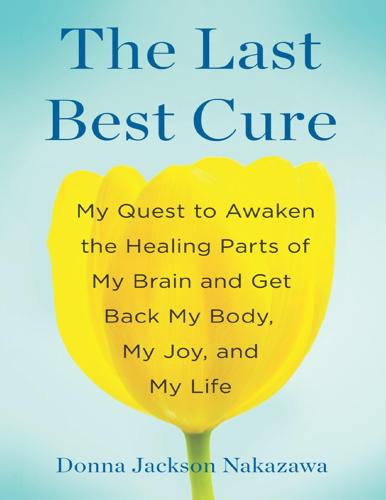
The Last Best Cure: My Quest to Awaken the Healing Parts of My Brain and Get Back My Body, My Joy, a Nd My Life
by
Donna Jackson Nakazawa
Published 21 Feb 2013
Being active reduces frequency and severity of colds: Nieman DC, Henson DA, Austin MD, et al. Upper respiratory tract infection is reduced in physically fit and active adults.Br J Sports Med. 2011 Sep;45(12):987–92. and our risk of Alzheimer’s: Stranahan AM, Martin B, Maudsley S. Anti-inflammatory effects of physical activity in relationship to improved cognitive status in humans and mouse models of Alzheimer’s disease. Curr Alzheimer Res. 2012 Jan 1;9(1):86–92. Chapter Twenty proving to be remarkably helpful in patients suffering from back pain: Büssing A, Ostermann T, Lüdtke R, et al. Effects of yoga interventions on pain and pain-associated disability: A meta-analysis. J Pain. 2012 Jan;13(1):1–9.
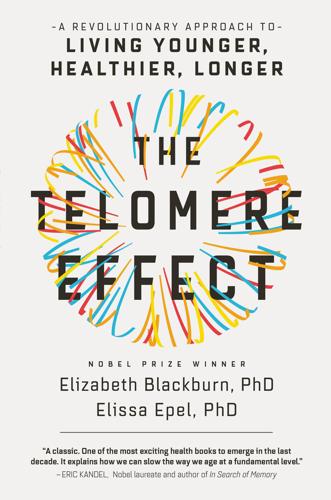
The Telomere Effect: A Revolutionary Approach to Living Younger, Healthier, Longer
by
Dr. Elizabeth Blackburn
and
Dr. Elissa Epel
Published 3 Jan 2017
Yaar, “Telomere-Mediated Effects on Melanogenesis and Skin Aging,” Journal of Investigative Dermatology Symposium Proceedings 14, no. 1 (August 2009): 25–31, doi:10.1038/jidsymp.2009.9. 7. Kassem, M., and P. J. Marie, “Senescence-Associated Intrinsic Mechanisms of Osteoblast Dysfunctions,” Aging Cell 10, no. 2 (April 2011): 191–97, doi:10.1111/j.1474-9726.2011.00669.x. 8. Brennan, T. A., et al., “Mouse Models of Telomere Dysfunction Phenocopy Skeletal Changes Found in Human Age-Related Osteoporosis,” Disease Models and Mechanisms 7, no. 5 (May 2014): 583–92, doi:10.1242/dmm.014928. 9. Inomata, K., et al., “Genotoxic Stress Abrogates Renewal of Melanocyte Stem Cells by Triggering Their Differentiation,” Cell 137, no. 6 (June 12, 2009): 1088–99, doi:10.1016/j.cell.2009.03.037. 10.

The Cancer Chronicles: Unlocking Medicine's Deepest Mystery
by
George Johnson
Published 26 Aug 2013
Bissell and Derek Radisky, “Putting Tumours in Context,” Nature Reviews Cancer 1, no. 1 (October 2001): 46–54. [http://www.ncbi.nlm.nih.gov/pmc/articles/PMC2975572] CHAPTER 6 “How Heart Cells Embrace Their Fate” 1. an embryo is so much like a tumor: The complex process of implantation is described in Haibin Wang and Sudhansu K. Dey, “Roadmap to Embryo Implantation: Clues from Mouse Models,” Nature Reviews Genetics 7, no. 3 (March 1, 2006): 185–99. [http://www.nature.com/nrg/journal/v7/n3/abs/nrg1808.html] For some of the parallels with tumorigenesis see Michael J. Murray and Bruce A. Lessey, “Embryo Implantation and Tumor Metastasis: Common Pathways of Invasion and Angiogenesis,” Seminars in Reproductive Medicine 17, no. 3 (March 15, 2008): 275–90.
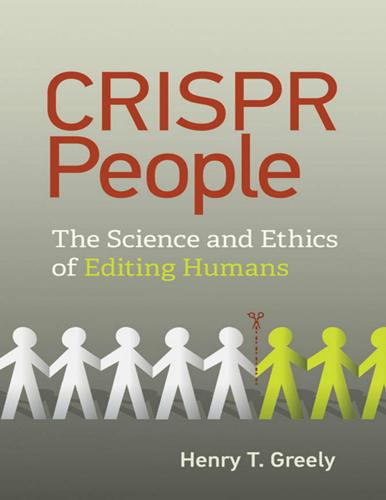
CRISPR People: The Science and Ethics of Editing Humans
by
Henry T. Greely
Published 22 Jan 2021
., “Self-Organization of the in Vitro Attached Human Embryo”; Shahbazi et al., “Self-Organization of the Human Embryo.” 13. Insoo Hyun, Amy Wilkerson, and Josephine Johnston, “Embryology Policy: Revisit the 14Day Rule,” Nature 533, no. 7602 (2016): 169–171, https://doi.org/10.1038/533169a. 14. Robert L. Perlman, “Mouse Models of Human Disease: An Evolutionary Perspective,” Evolution, Medicine, and Public Health 2016, no. 1 (January 2016), https://doi.org/10.1093/emph/eow014. 15. David Grimm, “Record Number of Monkeys Being Used in U.S. Research,” Science, 2018, 1–8, https://doi.org/10.1126/science.aav9290. 16. National Institutes of Health, “Statement by NIH Director Dr.
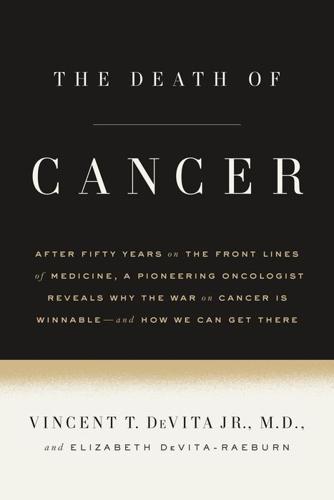
The Death of Cancer: After Fifty Years on the Front Lines of Medicine, a Pioneering Oncologist Reveals Why the War on Cancer Is Winnable--And How We Can Get There
by
Vincent T. Devita, Jr., M. D.
and
Elizabeth Devita-Raeburn
Published 3 Nov 2015
TOP Howard Skipper, the self-proclaimed mouse doctor of the NCI; ABOVE RIGHT Jay Freireich; ABOVE Tom Frei; RIGHT Gordon Zubrod (Credit: The Website of the National Cancer Institute, www.cancer.gov). Together, they revolutionized the treatment of childhood leukemia with combination chemotherapy. Back on the boardwalk with, from left to right, Ron Yankee, who helped me decipher the cell growth rates of leukemia in our mouse model, which would help me transform MOMP into MOPP; George Canellos, nicknamer extraordinaire; and Jack Moxley Paul Carbone, chief of the NCI’s medicine branch at the time of this photo. The clinical associates gave him a terrible time—largely because he was easier to take on than the terrifying Jay Freireich.
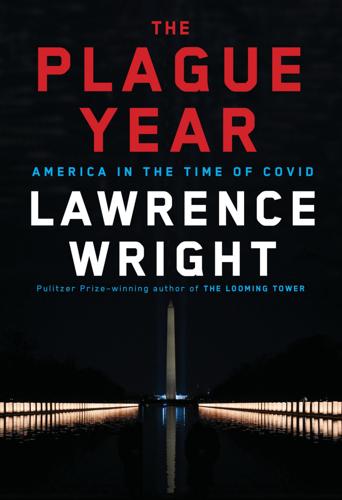
The Plague Year: America in the Time of Covid
by
Lawrence Wright
Published 7 Jun 2021
, p. 102. no naturally occurring bat virus: Antoni G. Wrobel, et al., “SARS-CoV-2 and bat RaTG13 spike glycoprotein structures inform on virus evolution and furin-cleavage effects,” Nature Structural & Molecular Biology, July 9, 2020. 96 percent of its genome: Shi-Hui Sun, et al., “A Mouse Model of SARS-CoV-2 Infection and Pathogenesis,” Cell Host & Microbe, July 8, 2020. common ancestor: Jon Cohen, “Trump ‘owes us an apology.’ Chinese scientist at the center of COVID-19 origin theories speaks out,” Science, July 24, 2020. The NIH: Nicholson Baker, “The Lab-Leak Hypothesis,” New York magazine, Jan. 4, 2021.
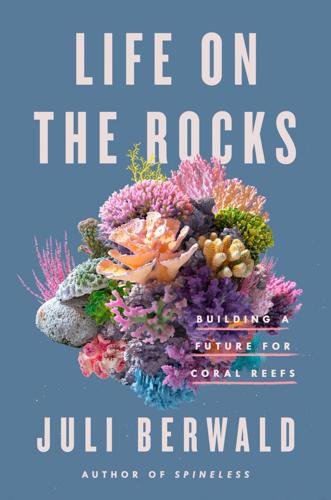
Life on the Rocks: Building a Future for Coral Reefs
by
Juli Berwald
Published 4 Apr 2022
., “Group A Streptococcus Intranasal Infection Promotes CNS Infiltration by Streptococcal-Specific Th17 Cells,” The Journal of Clinical Investigation 126, no. 1 (2015): 303–17, https://www.jci.org/articles/view/80792. Maryann Platt et al., “Th17 Lymphocytes Drive Vascular and Neuronal Deficits in a Mouse Model of Postinfectious Autoimmune Encephalitis,” Proceedings of the National Academy of Sciences of the United States of America 117, no. 12 (2020): 6708–16, https://www.pnas.org/content/117/12/6708. GO TO NOTE REFERENCE IN TEXT Chapter 11. The Holobiont artillery of stinging cells: Debora de Oliveira Pires, “Cnidae of Scleractinia,” Proceedings of the Biological Society of Washington 110, no. 2 (July 9, 1997): 167–85, https://archive.org/stream/proceedingsofb1101997biol/proceedingsofb1101997biol_djvu.txt.
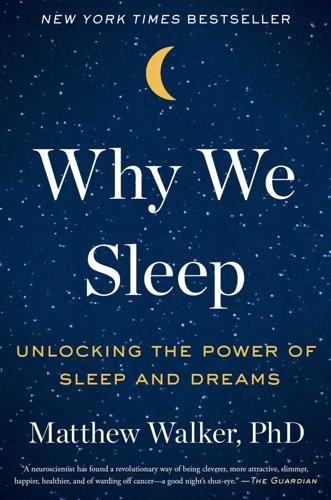
Why We Sleep: Unlocking the Power of Sleep and Dreams
by
Matthew Walker
Published 2 Oct 2017
Praharaj, “Slow wave sleep deficits as a trait marker in patients with schizophrenia,” Schizophrenia Research 124, no. 1 (2010): 127–33. XVIII. M. F. Profitt, S. Deurveilher, G. S. Robertson, B. Rusak, and K. Semba, “Disruptions of sleep/wake patterns in the stable tubule only polypeptide (STOP) null mouse model of schizophrenia,” Schizophrenia Bulletin 42, no. 5 (2016): 1207–15. XIX. D. J. Foley, A. A. Monjan, S. L. Brown, E. M. Simonsick et al., “Sleep complaints among elderly persons: an epidemiologic study of three communities,” Sleep 18, no. 6 (1995): 425–32. See also D. J. Foley, A. A. Monjan, E.
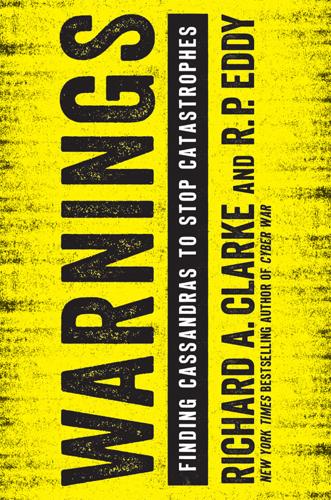
Warnings
by
Richard A. Clarke
Published 10 Apr 2017
Hao Yin, Wen Xue, et al., “Genome Editing with Cas9 in Adult Mice Corrects a Disease Mutation and Phenotype,” Nature Biotechnology 32, no. 6 (Mar. 30, 2014): 551–53, DOI:10.1038/nbt.2884. 9. Chengzhu Long, Leonela Amoasii, et al., “Postnatal Genome Editing Partially Restores Dystrophin Expression in a Mouse Model of Muscular Dystrophy,” Science 351, no. 6271 (Jan. 22, 2016): 400–403, DOI: 10.1126/science.aad5725. 10. Jonathan Rockoff, “Why Gene-Editing Technology Has Scientists Excited,” Wall Street Journal, June 28, 2015, www.wsj.com/articles/why-gene-editing-technology-has-scientists-excited-1434985998 (accessed Oct. 11, 2016). 11.
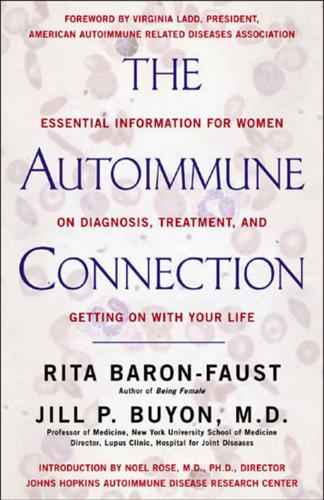
The Autoimmune Connection
by
Rita Baron-Faust
and
Jill Buyon
Published 21 Apr 2003
The anti-cytokine therapies in their many forms are on the pharmacy shelves, but just remember they do not stop the disease, they only treat the symptoms. We must also target the cells that cause destruction in autoimmunity. It was long thought that once the disease was fully established, identifying markers of only “bad” cells would not exist. On the research side, at least in spontaneous mouse models, these “bad” cells can be uniquely identified. Finally, we need a greater understanding of the antigens that provoke autoimmunity to begin. This research is moving forward, albeit more slowly. It was long thought there would only be one antigen per disease, but perhaps the more typical picture is that there are many antigens that trigger disease.
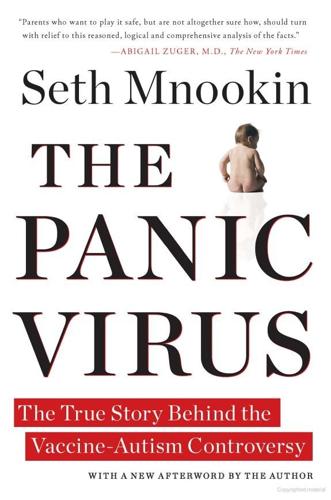
The Panic Virus: The True Story Behind the Vaccine-Autism Controversy
by
Seth Mnookin
Published 3 Jan 2012
Pediatrics 2008;121(4): e836–43. Smith, Philip, et al. “Children Who Have Received No Vaccines: Who Are They and Where Do They Live?” Pediatrics 2004;114: 187–95. Smith Rebecca G., et al. “Advancing Paternal Age Is Associated with Deficits in Social and Exploratory Behaviors in the Offspring: A Mouse Model.” PLoS ONE 2009;4(12): e8456. Spinney, Laura. “UK Autism Fracas Fuels Calls for Peer Review Reform.” Nature Medicine 2004;10: 321. Spitzer, R. L. “The Diagnostic Status of Homosexuality in the DSM-III: A Reformulation of the Issues.” The American Journals of Psychiatry 1981;138: 210–15. Stehr-Green, Paul, et al.

Lifespan: Why We Age—and Why We Don't Have To
by
David A. Sinclair
and
Matthew D. Laplante
Published 9 Sep 2019
“Nova ScienceNOW: Epigenetics,” PBS, http://www.pbs.org/wgbh/nova/education/viewing/3411_02_nsn.html. 14. C. A. Makarewich and E. N. Olson, “Mining for Micropeptides,” Trends in Cell Biology 27, no. 9 (September 27, 2017): 685–96, https://www.ncbi.nlm.nih.gov/pubmed/28528987. 15. D. C. Dolinoy, “The Agouti Mouse Model: An Epigenetic Biosensor for Nutritional and Environmental Alterations on the Fetal Epigenome,” Nutrition Reviews 66, suppl. 1 (August 2008): S7–11, https://www.ncbi.nlm.nih.gov/pmc/articles/PMC2822875/. 16. The more extroverted you are, the longer your lifespan, while, perhaps unsurprisingly, pessimists and psychotics see significant increases in the risk of death at an earlier age.
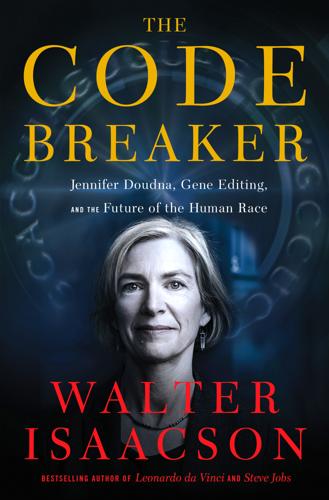
The Code Breaker: Jennifer Doudna, Gene Editing, and the Future of the Human Race
by
Walter Isaacson
Published 9 Mar 2021
Heidi Ledford, “CRISPR, the Disruptor,” Nature, June 3, 2015. Danilo Maddalo… and Andrea Ventura, “In vivo Engineering of Oncogenic Chromosomal Rearrangements with the CRISPR/Cas9 System,” Nature, Oct. 22, 2014; Sidi Chen, Neville E. Sanjana… Feng Zhang, and Phillip A. Sharp, “Genome-wide CRISPR Screen in a Mouse Model of Tumor Growth and Metastasis,” Cell, Mar. 12, 2015. 2. James Clapper, “Threat Assessment of the U.S. Intelligence Community,” Feb. 9, 2016; Antonio Regalado, “The Search for the Kryptonite That Can Stop CRISPR,” MIT Technology Review, May 2, 2019; Robert Sanders, “Defense Department Pours $65 Million into Making CRISPR Safer,” Berkeley News, July 19, 2017. 3.

Never Bet Against Occam: Mast Cell Activation Disease and the Modern Epidemics of Chronic Illness and Medical Complexity
by
Lawrence B. Afrin M. D.
,
Kendra Neilsen Myles
and
Kristi Posival
Published 15 Jan 2016
I’ve seen similar results with low-dose hydroxyurea in several other MCAS patients with otherwise refractory pain syndromes – and I’ve also observed enough overlap between the presentation and behavior of the bone/muscle/joint pain syndrome in MCAS patients and the presentation and behavior of the bone/muscle/joint pain syndrome in sickle cell anemia patients (many of whom demonstrate chronic inflammatory issues and other issues much easier to attribute to mast cell activation than sickle cell anemia) that I have to wonder if at least part of the reason why hydroxyurea benefits so many of the “sicker” sickle cell anemia patients is because it’s helping to control an unrecognized MCAS in these patients. (Interestingly, another researcher at my institution (Dr. Kalpna Gupta) and her team recently discovered that, at least in a mouse model of sickle cell anemia, it’s mast cell activation that causes the lion’s share of the pain from a classic sickle cell vaso-occlusive crisis, and mast cell stabilizers can help decrease this pain. Another noted sickle cell researcher, Dr. Abdullah Kutlar at Georgia Regents University, and his team recently reported that serum tryptase levels are higher in sickle cell patients with chronic pain compared to sickle cell patients without chronic pain.
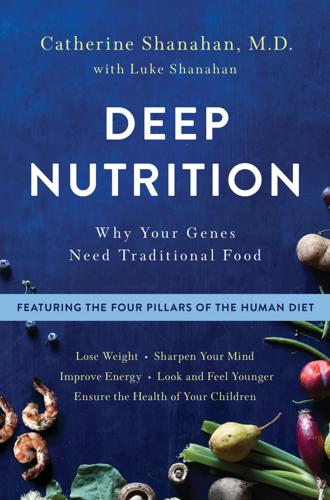
Deep Nutrition: Why Your Genes Need Traditional Food
by
Catherine Shanahan M. D.
Published 2 Jan 2017
Reduced prefrontal dopaminergic activity in valproic acid-treated mouse autism model, Hara Y, Takuma K, Takano E, Katashiba K, Taruta A, Higashino K, Hashimoto H, Ago Y, Matsuda T, Behav Brain Res, August 1, 2015, 289:39-47. 398. Current research on methamphetamine-induced neurotoxicity: animal models of mono-amine disruption (review), Kita T, Wagner GC, Nakashima T, J Pharmacol Sci, July 2003, 92(3):178-95 399. Prenatal exposure to a common organophosphate insecticide delays motor development in a mouse model of idiopathic autism, De Felice A, Scattoni ML, Ricceri L, Calamandrei G, PLoS One, Mar 24, 2015, 10(3):e0121663. 400. Neurodevelopmental disorders and prenatal residential proximity to agricultural pesticides: the CHARGE study, Shelton JF, Geraghty EM, Tancredi DJ, Delwiche LD, Schmidt RJ, Ritz B, Hansen RL, Hertz-Picciotto I, Environ Health Perspect, October 2014, 122(10):1103-9. 401.
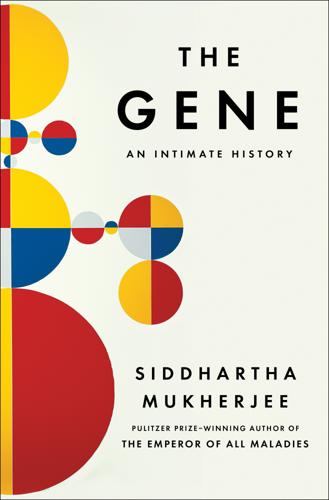
The Gene: An Intimate History
by
Siddhartha Mukherjee
Published 16 May 2016
The “watchmaker” of evolution, as Richard Dawkins: Richard Dawkins, The Blind Watchmaker: Why the Evidence of Evolution Reveals a Universe without Design (W. W. Norton, 1986). They are the savants of the rodent world: Kiyohito Murai et al., “Nuclear receptor TLX stimulates hippocampal neurogenesis and enhances learning and memory in a transgenic mouse model,” Proceedings of the National Academy of Sciences 111, no. 25 (2014): 9115–20. “It may be the field’s dirty little secret”: Karen Hopkin, “Ready, reset, go,” The Scientist, March 11, 2011, http://www.the-scientist.com/?articles.view/articleNo/30726/title/Ready--Reset--Go/. In 1988, a two-year-old girl: Details of the story of Ashanti DeSilva are from W.

The Singularity Is Near: When Humans Transcend Biology
by
Ray Kurzweil
Published 14 Jul 2005
Selkoe, "Inflammation and Therapeutic Vaccination in CNS Diseases," Nature 420.6917 [December 19–26, 2002]: 879-84). These researchers showed that a vaccine in the form of nose drops could slow the brain deterioration of Alzheimer's. H. L.Weiner et al., "Nasal Administration of Amyloid-beta Peptide Decreases Cerebral Amyloid Burden in a Mouse Model of Alzheimer's Disease," Annals of Neurology 48.4 (October 2000): 567–79. 52. S. Vasan, P. Foiles, and H. Founds, "Therapeutic Potential of Breakers of Advanced Glycation End Product-Protein Crosslinks," Archives of Biochemistry and Biophysics 419.1 (November 1, 2003): 89–96; D. A. Kass, "Getting Better Without AGE: New Insights into the Diabetic Heart," Circulation Research 92.7 (April 18,2003): 704–6. 53.
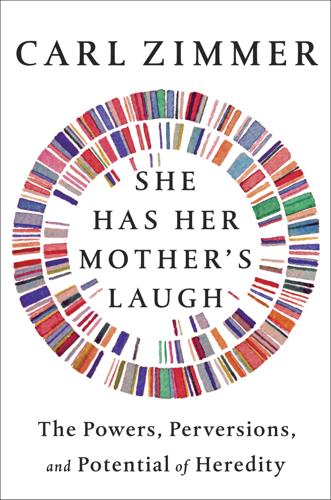
She Has Her Mother's Laugh
by
Carl Zimmer
Published 29 May 2018
Jaenisch and his colleagues then implanted these altered eggs in female mice, where they developed into healthy pups. Eighty percent of the time, Jaenisch’s team successfully engineered precisely the changes they desired. A new generation of graduate students silently thanked Jaenisch every day for making their lives easier. Many PhD projects had to start with the creation of a mouse model to study a gene or a disease. It typically took eighteen months to create a line of mice, and often it took more than one try to get the mouse right. Now, with CRISPR, Jaenisch needed only five months to get the job done. * * * — I was working as a reporter during those frenzied years, and I did my best to keep up with CRISPR’s advances.

Behave: The Biology of Humans at Our Best and Worst
by
Robert M. Sapolsky
Published 1 May 2017
Moreover, this is a social process—learning is enhanced if the mice are related or have mated.4 In another study a mouse would be exposed to an aggressive intruder placed in its cage.5 As shown previously, this produces persistent adverse consequences—a month later, such mice still had elevated glucocorticoid levels and were more anxious and more vulnerable to a mouse model of depression.* Importantly, the same persistent effects would be induced in a mouse merely observing another mouse experiencing that stressful intruder paradigm. An even more striking demonstration of “your pain is my pain” in another species came in a 2006 Science paper from Jeff Mogil of McGill University.6 A mouse would observe another mouse (separated from it by Plexiglas) in pain, and, as a result, its own pain sensitivity increased.* In another part of the study, an irritant would be injected in a mouse’s paw; mice typically lick their paw at that point, with the amount of licking indicating the amount of discomfort.
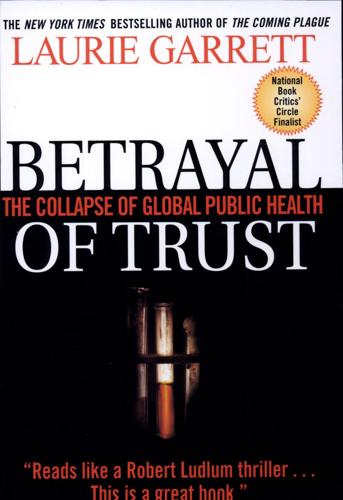
Betrayal of Trust: The Collapse of Global Public Health
by
Laurie Garrett
Published 15 Feb 2000
Thesis, Social Sciences Department, California Polytechnic State University, 1995; Bonnet, M., Akamituna, P., and Mazaya, A. “Unrecognized Ebola hemorrhagic fever at Mosango Hospital during the 1995 epidemic in Kikwit, Democratic Republic of the Congo.” Emerging Infectious Diseases 4 (1998): 508–10; Bray, M., Davis, K., Geisbert, T., et al. “A mouse model for evaluation of prophylaxis and therapy of Ebola Hemorrhagic Fever” Journal of Infectious Diseases 178 (1998): 651–61; Breman, J. B., van der Groen, G., Peters, C. J., et al. “International Colloquium on Ebola Virus Research: Summary Report.” Journal of Infectious Diseases 176 (1997): 1058–63; Centers for Disease Control.